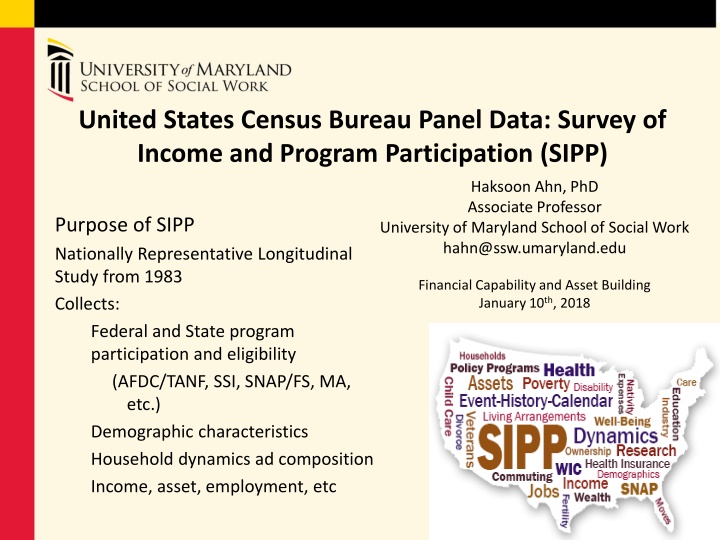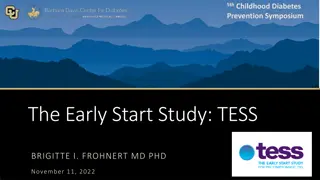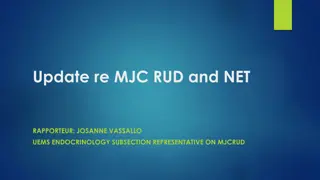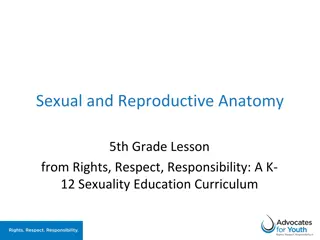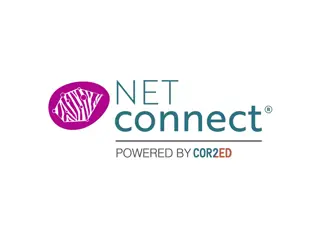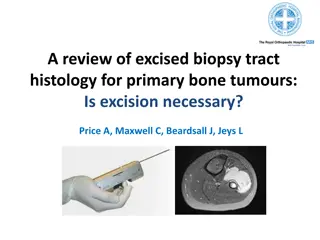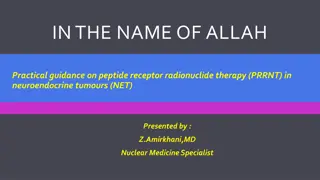Overview of Neuroendocrine Tumours WHO 5th Ed.
Neuroendocrine tumours (NET) are malignant well-differentiated neoplasms affecting both endocrine and non-endocrine organs. They commonly occur in organs like the lung, gastrointestinal tract, pancreas, urogenital system, and more. These tumours present with hormonal and mass effects, and their classification is based on grading systems like Ki67 index and mitotic figures. Different types exist, including WD-NET, SC NEC, LC NEC, PD NEC, and MiNENs. Additionally, G3 NET vs NEC differentiation is crucial for precise diagnosis and treatment planning.
Download Presentation

Please find below an Image/Link to download the presentation.
The content on the website is provided AS IS for your information and personal use only. It may not be sold, licensed, or shared on other websites without obtaining consent from the author.If you encounter any issues during the download, it is possible that the publisher has removed the file from their server.
You are allowed to download the files provided on this website for personal or commercial use, subject to the condition that they are used lawfully. All files are the property of their respective owners.
The content on the website is provided AS IS for your information and personal use only. It may not be sold, licensed, or shared on other websites without obtaining consent from the author.
E N D
Presentation Transcript
United States Census Bureau Panel Data: Survey of Income and Program Participation (SIPP) Haksoon Ahn, PhD Associate Professor Purpose of SIPP Nationally Representative Longitudinal Study from 1983 Collects: Federal and State program participation and eligibility (AFDC/TANF, SSI, SNAP/FS, MA, etc.) Demographic characteristics Household dynamics ad composition Income, asset, employment, etc University of Maryland School of Social Work hahn@ssw.umaryland.edu Financial Capability and Asset Building January 10th, 2018
Methodology: Panel Sample Size and Redesign Table 1: Panel Data Sample Size First SIPP Panel was conducted with 9 waves and a sample size of 20,897 households per wave. 1983 Welfare Reform: Redesign and implementation of SIPP 1996 Last completed Panel Set data Includes 13 waves and sample size of 52,031 households per wave. 2008 Currently gathering Panel data with 53,000 Household sample per wave. 2014 (Source: U.S. Census Bureau, 2009. SIPP User s guide sample design and interview procedures: Chapter 2. http://www.census.gov/content/dam/Census/programs- surveys/sipp/methodology/SIPP_USERS_Guide_Chapter2_2009.pdf) 2
Core and Topical Modules Core Modules: Repeated in every month or wave. Data includes: Demographics, Labor force, Income, Welfare participation 2014 Wave 1 Financial Variables Was unable to pay the utility bills? Was.. Unable to pay rent or mortgage? Could not afford valance meals? Amount of income received from trusts during the reference period. Owned any money market accounts or money market funds during the reference period. Owned any other financial investments during the reference period [such as coins, collectibles, jewelry, artwork, mortgages paid to him/her, other loans owned to him/her, and royalties] Person-level sum of all debt Topical Modules: Specific program and policies questions. Not repeatedly measured. Income Education Housing Household Composition Government Program Participation Employment Health Insurance Coverage 3
SIPP Topical Module Categories and Uses of SIPP - One of the most important reasons for conducting SIPP is to gather detailed information on participation in income transfer programs. - How have changes in eligibility rules or benefit levels affected recipients? - How do wealth and income patterns differ for various age, gender, and racial groups? Program Participation Category Topical Module Adult Well-Being; Extended Measures of Well-Being; Children s Well-Being; Functional Limitations and Disability (Child and Adult); Health Status and Utilization of Health Care Services; Long-Term Care; Medical Expenses, Work Disability; Work Disability History. Annual Income and Retirement Accounts; Assets and Liabilities; Real Estate Property and Vehicles; Recipiency History; Retirement Expectations and Pension Plan Coverage; School Enrollment and Financing; Wealth and Eligibility, Selected Financial Assets; Shelter Costs and Energy Usage; Support for Non-household Members; Taxes. Health, Disability, & Physical Well- Being Financial - What factors affect change in household and family structure and living arrangements? - What are the interactions between changes in the structure of households and families and the distribution of income? - What effects do changes in household composition have on economic status and program eligibility? - What are the primary determinants of turnover in programs such as Food Stamps? Longitudinal Survey Child Care & Financial Support Child Care Child Support Agreements; Child Support Paid; Support for Non-household Members. Education and Training History; Employment History; School Enrollment and Financing; Work-Related Expenses; Work Schedule. Education & Employment Family Characteristics & Living Conditions Household Extended Measures of Well-Being; Fertility History; Household Relationships; Marital History. Education and Training History; Employment History; Fertility History; Marital History; Migration History; Recipiency History; Work Disability History. Personal History Eligibility for and Recipiency of Public Assistance; Job Search and Training Assistance; Job Subsidies; Transportation Assistance; Health Care; Food Assistance. Welfare Reform Source: (U.S. Census Bureau, 2008; http://www.census.gov/content/dam/Census/programs- surveys/sipp/methodology/SIPP_USERS_Guide_Chapter3_2008.pdf) 4
U. S. Census Bureau SIPP Website Find all Panel Data under the Data Tab. Describes SIPP Data Collection Process 5
Empirical Case Study: Using SIPP Multiple Panels to Analyze Effects of Welfare Reform on Income, Childcare, and Employment among Low-Income Single Mothers Ahn, H. (2015) Economic well-being of low-income single mother families following welfare reform in the USA. International Journal of Social Welfare, 24(1), 14-26. Ahn, H. (2012). Child care subsidy, child care costs, and employment of low- income single mothers. Children and Youth Services Review, 34(2), 379-387.
